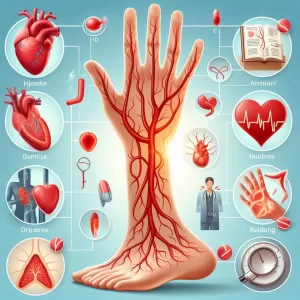ما هو تخطيط النوم: نظرة عامة ، الفوائد ، والنتائج المتوقعة
التعريف والنظرة العامة
Polysomnography is a medical test primarily used for the diagnosis of sleeping disorders. It’s designed to record brain wave activity, blood oxygen levels, breathing and heart rate as well as eye and leg movements while the patient is asleep. It can detect any disruptions to normal sleep patterns helping doctors to diagnose any abnormalities so a targeted treatment plan can be formulated.
من يجب أن يخضع للنتائج المتوقعة
Polysomnography is recommended for patients who are suspected of having sleep disorders, such as:
- Sleep apnoea, or when a patient stops breathing during sleep
- Periodic limb movement disorder, or when a patient flexes and extends his legs involuntarily during sleep
- Narcolepsy, or when a person experiences extreme drowsiness and sudden sleepiness during the day
- REM sleep behaviour disorder, or when a patient acts out dreams during sleep
- Chronic insomnia, or difficulty falling asleep or staying asleep throughout the night
Polysomnography can also be recommended to patients who experience the following symptoms:
- Difficulty falling asleep
- Frequent sleep disruptions
- Breathing problems during sleep
- Involuntary movements during sleep
- Feeling extremely sleepy during the day
- Snoring
- Making abnormal noises during sleep
- Making abnormal muscle activities such as twitching the eyes
- Holding the breath during sleep, then gasping or snorting out
A polysomnography monitors the patient’s sleeping patterns throughout all stages of sleep and records the patient’s:
- Brainwaves
- Heart rate
- Blood oxygen level
- Breathing pattern
- Eye movements
- Body or limb movements
كيف يتم إجراء العملية؟
Polysomnography is a routine diagnostic test performed in special sleep centres or sleep disorders unit of a hospital. It is usually scheduled at night so the patient’s nighttime sleep patterns can be properly observed. To easily fall asleep for the test, patients are advised against napping on the afternoon prior to the sleep study and to refrain from consuming anything that contains caffeine or alcohol, as both can have an effect on the sleep patterns and may aggravate the symptoms the patient is experiencing.
During the actual test, the patient is asked to sleep alone in a dark and quiet room equipped with a video camera and an audio system. Throughout the test, sensors are attached to the patient’s scalp, temple, legs, and chest. The data provided by the sensors tend to differ depending on what kind of sleep study is being performed, which could be:
- Diagnostic overweight PSG
- Diagnostic daytime multiple sleep latency test
- Two-night evaluation PSG and CAP titration
- Split-night PSG with CAP titration
To ensure the efficacy and results of the test, practitioners used a combination of several different tests and equipment, such as:
- EEG or electroencephalogram
- EMG or electromyogram
- EOG or electrooculogram
- EKG or electrocardiogram
- Snoring microphone
- Nasal airflow sensor
If sleep apnoea is strongly suspected, the patient may also be hooked to a positive airway pressure or PAP machine to enhance his breathing during sleep.
On the morning following the sleep study, the patient is discharged and advised to come back for a scheduled follow-up visit where the results of the test are discussed.
In some cases, the polysomnography is followed by another sleep-related diagnostic test called the multiple sleep latency test or MSLT, especially if daytime sleepiness is an issue for the patient. An MSLT test is capable of recording the number and length of naps that a person takes within a single day.
المخاطر والمضاعفات المحتملة
Polysomnography is a safe diagnostic test that causes little to no pain and discomfort to the patient. It is non-invasive and not associated with any serious risks to health. The most common side effect reported is skin irritation arising from the adhesive used to attach sensors to the body during the test.
مراجع:
-
Armon C., “Polysomnography.” Medscape. http://emedicine.medscape.com/article/1188764-overview#a1
-
Rohling L., Blankvoort C., Mattern-Coren E., De Weerd A., “Medical technology assessment of polysomnography, type 2: Full PSG at home.” http://www.sleep-journal.com/article/S1389-9457(13)01807-8/abstract
-
Beck S., Marcus C. “Pediatric polysomnography.” Sleep Med Clin. 2009; 4(3): 393-406. http://www.ncbi.nlm.nih.gov/pmc/articles/PMC2739664/
/ trp_language]
What is Polysomnography: Overview, Benefits, and Expected Results
Introduction
Polysomnography is a diagnostic test that measures various physiological parameters during sleep. It helps healthcare professionals evaluate and diagnose sleep disorders such as sleep apnea, insomnia, narcolepsy, and periodic limb movement disorder.
Overview of Polysomnography
Polysomnography, also known as a sleep study, is a non-invasive test that typically takes place in a sleep laboratory. It involves the monitoring and recording of various physiological functions during sleep, including brain activity, eye movements, muscle activity, heart rate, and breathing patterns.
The test is usually conducted overnight to track the changes in these functions throughout different stages of sleep. It provides valuable information about the quality of sleep, the presence of sleep disorders, and any underlying medical conditions that may be affecting sleep.
The Polysomnography Procedure
During a polysomnography test, the patient visits a sleep laboratory where they are comfortably set up in a bedroom-like environment. The following key measurements are taken:
- Electroencephalogram (EEG): Measures brain activity and helps identify different stages of sleep.
- Electrooculogram (EOG): Monitors eye movements to determine the stage of sleep (REM or non-REM sleep).
- Electromyogram (EMG): Records muscle activity to identify periods of muscle relaxation or movement during sleep.
- Electrocardiogram (ECG): Tracks heart rate and rhythm to assess any abnormalities or disturbances during sleep.
- Airflow and Respiratory Effort: Monitors breathing patterns and measures the effort required to breathe.
- Oxygen Saturation: Determines the amount of oxygen in the blood, crucial for assessing sleep-related breathing disorders.
These measurements are collected using electrodes and sensors strategically placed on the scalp, face, chest, and legs.
Benefits of Polysomnography
Polysomnography plays a vital role in the diagnosis of sleep disorders and helps provide valuable insights for treatment planning. The benefits of polysomnography include:
- Accurate Diagnosis: Polysomnography provides conclusive data to accurately diagnose sleep disorders by objectively measuring multiple physiological parameters.
- Treatment Planning: With detailed information about the specific sleep disorder, healthcare professionals can create personalized treatment plans that address the root cause of the problem.
- Monitoring Treatment Efficacy: Polysomnography can be used to assess the effectiveness of various treatments for sleep disorders, monitoring progress, and making appropriate adjustments.
- Identifying Underlying Medical Conditions: Sleep disorders can be linked to various medical conditions such as cardiovascular disease, diabetes, and depression. Polysomnography helps identify these associations.
Expected Results
The results of a polysomnography test are interpreted by a sleep specialist or a healthcare professional trained in sleep medicine. The test provides insights into various aspects of sleep and can reveal:
- The presence and severity of sleep disorders, such as sleep apnea, insomnia, narcolepsy, and restless leg syndrome.
- The frequency and duration of nighttime awakenings.
- The presence of abnormal sleep patterns, such as REM sleep behavior disorder or night terrors.
- The overall quality and efficiency of sleep.
Using the data gathered from the test, the healthcare professional can make an accurate diagnosis and develop an appropriate treatment plan customized to the individual’s needs and condition.
خاتمة
Polysomnography is a valuable diagnostic tool for evaluating sleep disorders and providing insights into sleep quality and underlying medical conditions. This non-invasive test helps healthcare professionals accurately diagnose sleep disorders and develop personalized treatment plans. By monitoring the physiological parameters during sleep, polysomnography ensures that individuals receive the best care for their sleep-related health concerns.
2 تعليقات
اترك ردّاً
المقالات الشعبية








Very helpful information! #polysomnography
Great post! All the best information here.
Very helpful information! #polysomnography #sleepstudy #sleestudyresults #backgroundinfo